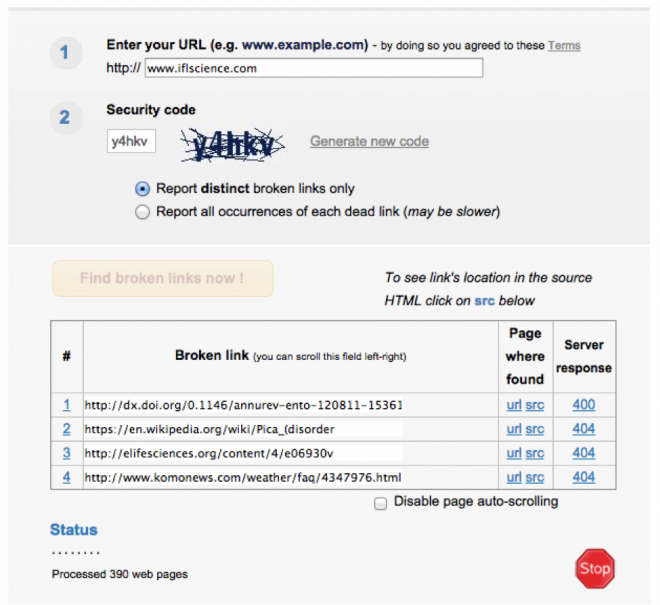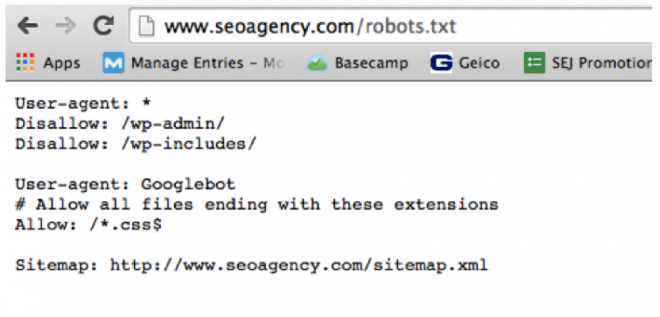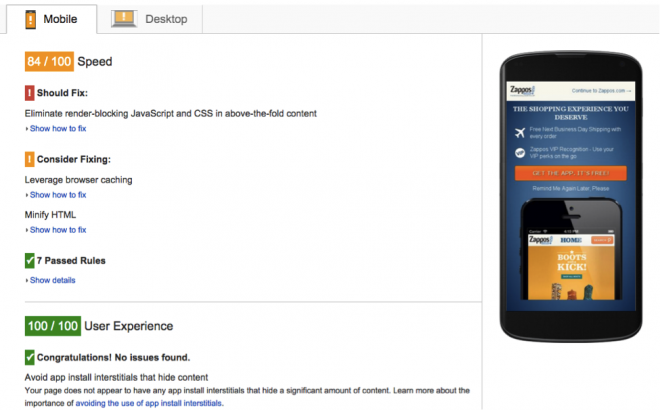You likely have at least some sort of SEO strategy in place, but it’s important that you continually revise and check-in on whether or not your processes are still working. While going through a full SEO audit or content audit is necessary for long-term success, it’s important to also have a few tricks up your sleeve when it comes to checking the health of your SEO quickly to make sure you’re on the right path (especially considering how long it takes to see results in SEO).
While you may do a full audit every six months, you should be checking the overall health every month. So how do you make it happen? Consider a few of the tools and tips below.
Broken Link Checker
There are many different tools out there that will check for broken links on your website, Broken Link Check being one of the most popular. Again, you simply visit the tool, type in your URL, and wait for all of your broken links to load. Having broken links on your website, regardless if they’re internal or external, can hurt your SEO, so this is a quick way to make sure that’s not happening. Keep in mind that even if you check one week and a particular link was fine, that doesn’t mean that it won’t be broken the next week. This is something that isn’t always in your control, so it’s an easy one to quickly check and quickly fix.


Check Your Robots.txt
If you’re not a coder this can seem intimidating, but it’s easy to check and make sure your website has robots.txt setup and working properly. A robots.txt file is something that every website should have for good SEO and there should be no major “disallows,†which means the Google bots may not be able to index certain pages. To check it out, type in:
Yourdomain/robots.txt
So for example, for this website we would type “highervisibility.com/robots.txt†into the Google search box. You will likely see a list of areas where crawlers are not allowed to index, so it’s your job to check this out and make sure you don’t have any SEO problems (meaning there is nothing you want crawled that isn’t being crawled). It definitely takes less than five minutes to check out, so try and do this whenever you’re thinking about it! Below shows an example:


PageSpeed Insights Tool
We’ve talked about this tool and we’ll talk about it again because it’s such a great resource to check your load times for both desktop and mobile. Because load time is so important to your SEO, this is a great place to start. Simply visit the tool here, type in your URL, and take a look at your results. The tool gives you recommendations about what you’re doing well and what you need to fix, so although your changes will take you longer than five minutes to complete, simply giving this a quick check won’t take long at all. If you run this test enough, hopefully you’ll never see more than one or two “red†items, or SEO elements that need attention.


Check Your PageRank and Domain Authority
The PageRank metric isn’t as important as it used to be, which you can learn more about here, but it can still be a good indication of whether or not your SEO is moving in the right direction. With PageRank and other domain authority metrics, like Alexa Rank, you want to really pay attention to if your number goes down (this is more likely than seeing it go up). You can quickly check this number by installing a PageRank browser extension. This way every time you visit the homepage of your website, you can see your ranking. Some extensions, such as MozBar, even allow you to click the number to learn more domain authority information, as shown below:


Check for Crawl Errors
Believe it or not, this is the easiest thing to check on this list but it’s the one that companies forget most often. Most assume that if you didn’t have a crawl error when you started your website then you’re safe, but this isn’t always the case. If you had a minor hack or someone changed something on the backend of your website, you may have errors that you don’t even know exist (until you see your ranking decrease, of course). Crawl errors can also happen on individual pages, so don’t assume you’re always safe. You can check for these errors by using the Google Search Console and the Fetch as Google tool, which will also allow you to check those individual pages.
The Takeaway
Keep in mind that a lot of the tools above can be used for a full website audit and some of the processes are the same, but these are all things you can check quickly to make sure there are no changes. If you do see a change, hopefully you can make the change as you go. The best option is to continually check these quick items, use these quick tools and then make changes as they go. For many, this approach can help you avoid having to conduct a large website audit so frequently.
Are there any tricks that you use to check the health of your website quickly? Let us know in the comment section below.
Republished by permission. Original here.
Health Monitor Photo via Shutterstock
